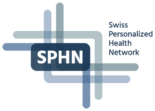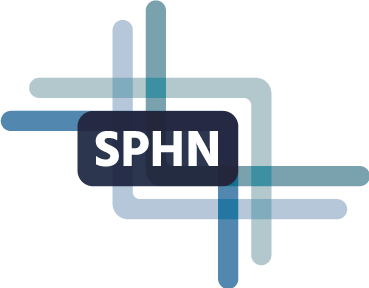Swiss Heart Failure Network (SHFN)
Main PIs: Prof. Christian Matter (USZ) and Prof. Joachim Buhmann (ETHZ)
Project consortium: Prof. Orcun Goksel (ETHZ), Prof. Sebastian Kozerke (ETHZ), Prof. François Mach (HUG), Prof. Christian Müller (USB), Prof. Gunnar Rätsch (ETHZ), Prof. Frank Ruschitzka (USZ), Prof. Olga Sorkine-Hornung (ETHZ), Prof. Stephan Windecker (Inselspital), Prof. Hatem Alkadhi (USZ), Prof. Haran Burri (HUG), Prof. Firat Duru (USZ), Prof. Beat Kaufmann (USB), Prof. Phillip Meyer (HUG), Prof. Christian Lovis (UniGE), Prof. Robert Manka (USZ), Prof. Lorenz Räber (Inselspital), Prof. Tobias Reichlin (Inselspital) Prof. Matthias Stuber (CHUV), Prof. Felix Tanner (USZ), Prof. Christian Templin (USZ).
Coordinators and contributors in Zurich: Lena Rubi, Florence Berger, Carolin Gänssle, Tanja Engels, Faith Sieber, Michael Matter, Valentina Rossi, Matthias Hermann, Matthias Nägele, Martin Reiner, Patrick Baumgartner, Jan Hellmund, Jonas Herth, Marat Shamshiev, Lucas Tramer, Kostas Bitos, Benjamin Juri, Daniel Ahlert, Tristan Tschaikowsky
Coordinators and contributors in Bern: André Frenk, Clara Orlando, Therese Fahrni
Main achievements
Our Swisswide consortium combined complementary cardiology and computing expertise and reports the following achievements for scientific research and infrastructure building:
-
- Clinical dataset with raw transthoracic echocardiography (TTE) data from patients with acute heart failure (AHF) and acute myocardial infarction (AMI). The combination of clinical data with raw TTE data offers various possibilities to address the value of deep learning algorithms for improving diagnosis and prioritize parameters for risk stratification in patients with AHF.
- Combination of clinical data, raw TTE and ECG data in AHF patients and normal controls will be used to test the interaction between TTE and ECG using deep learning (project ongoing).
- Automated visualization of structured TTE report in collaboration with the institute of computer visualization at ETH will ease communication of TTE reports to non-cardiologists and patients
- BIomedIT platform: Uniform data channels (for clinical data as well as raw data of ECG and TTE) and a clinical data warehouse network were implemented in collaboration with the respective IT departments of the collaborating sites and the ETH Zurich.
Reusable infrastructures and datasets
Swiss-wide electronic case report form (eCRF)
A total of 16.012 patients were selected automatically via ICD-10 Codes and transferred into the Swiss-wide eCRF. The codes I21.0, I21.1, I21.2, I21.3, I21.4, I21.9 were used to identify patients with acute coronary syndrome, while the codes I11.0, I11.01, I13.00, I13.01, I13.20, 13.21, I50.00, I50.01, I50.13, I50.14, I50.19, I50.9 represent patients with acute heart failure. Standardized eligibility criteria for retrospective inclusion of AMI and AHF patients have been defined for all sites and patients were included accordingly. The common eCRF contains automatically extracted variables as well as variables from manual completion of included patients from the patient file.
| Site | Patients selected by ICD-10 Codes |
| Insel | 6319 patients |
| HUG | 3876 patients |
| USB | 1669 patients |
| USZ | 4148 patients |
Available resources
For access to the SHFN codebook, please contact the project PI Prof. Dr. Christian Matter.
Cardiological Procedure Concepts
A transthoracic echocardiography (TTE) provides valuable cardiac imaging and is part of the clinical routine in cardiology. Several concepts related to TTE were developed by the DCC in cooperation with the SWISSHEART project. During the conceptual modelling process separate concepts were identified such as valve, chamber and pericardium assessment.
Moreover, we have developed concepts for electrocardiography (ECG), that describes cardiac voltage changes during a heart cycle.
These concepts are not only relevant for the SWISSHEART project, other disciplines such as oncology, neurology, pneumology or highly specialized fields such as intensive care are interested in cardiac concepts.
Available resources
Follow up projects – continuation – next steps
Manual completion of missing core variables in database (baseline and outcome).
Future projects:
- Specify and rank key variables relevant for disease severity and risk prediction;
- Characterize clusters of AHF that can be used for risk stratification;
- Identify and rank clinical and/or TTE/ECG-derived features in AHF patients that predict outcome.
Further information
Publications resulting from other Cohorts or open-access data:
- F Laumer, G Fringeli, A Dubatovka, L Manduchi, JM Buhmann. "DeepHeartBeat: Latent trajectory learning of cardiac cycles using cardiac ultrasounds." In Machine Learning for Health, pp. 194-212. PMLR, 2020
- Buoso S, Joyce T & Kozerke S (2021). Personalising left-ventricular biophysical models of the heart using parametric physicsinformed neural networks. Medical Image Analysis, 71, 102066.
- Laumer F, Di Vece D, Cammann VL, Würdinger M, Petkova V, Schönberger M,... & Buhmann JM, Templin C (2022). Assessment of Artificial Intelligence in Echocardiography Diagnostics in Differentiating Takotsubo Syndrome from Myocardial Infarction. JAMA cardiology. 2022
- Manduchi, L., Marcinkevičs, R., Massi, M. C., Weikert, T., Sauter, A., Gotta, V., ... & Vogt, J. E. (2021). A Deep Variational Approach to Clustering Survival Data. arXiv preprint arXiv:2106.05763.
- Dubatovka A and Buhmann JM. Automatic Detection of Atrial Fibrillation from Single-lead ECG Using Deep Learning of Cardiac Cycle. BME Frontiers. 2022
References on Pubmed
- Ruschitzka F, Lüscher TF, Buhmann JM, Matter CM. Improving 1-year mortality prediction in ACS patients using machine learning. Eur Heart J Acute Cardiovasc Care. 2021, 10(8):855-865; doi: 10.1093/ehjacc/zuab030.
Disclaimer: The contents on this website are intended as a general source of information and have been provided by the project PIs. The SPHN Management Office is not responsible for its accuracy, validity, or completeness.

